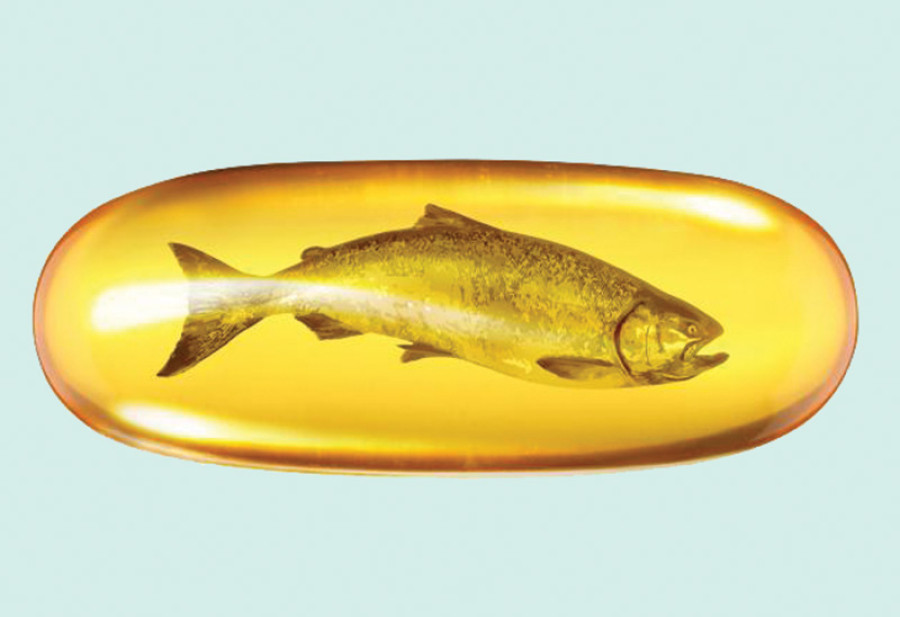Opinion
Something fishy
Humans need protein in their diet and fish are a healthier and viable alternative to meat in Nepal
Bhawana Upadhyay
Nepal has documented a deficit of nutrition for a while and is among the 10 countries in the world with the highest prevalence of stunting, with 41 percent of children under five years of age suffering from chronic malnutrition. From a nutritional perspective, the contribution of the fisheries sector could be indispensible. However, this is unexplored terrain.
With nearly 200 species currently available, Nepal’s geographical and climatic variation is considered suitable for further growth of fish biodiversity for both warm and cold water fish species. According to a recent report, the modern aquaculture along with open-water capture fishery contributes nearly 1 percent of gross domestic product (GDP) and 2.68 percent of agriculture gross domestic product (AGDP).
A couple of interesting points I came upon while rummaging through relevant literature: The fishing community in Nepal provides livelihoods to resource poor Janajatis like Majhi, Danuwar, Kewat, Bote, Mushahar, Kumal, Dangar, Jalari, Bantar, Rai, etc and fishing has long been a traditional item in their household nutrition supply.
Compared to the fisher folks of the hilly region, their counterparts from the Tarai plains, where water bodies spread over large areas, have easier access to freshwater fish. We can note murals and some wooden carvings depicting aquaculture in many houses of the Tarai, indicating the importance of fish in their culture and food habits.
Fish as a quality source of macro-and-micro nutritional food has yet to be established in our dining culture. I myself had never considered fish as an alternative source of protein until I was told by my nutritionist to increase my intake of omega-3 fatty acids. Most of our fellow city dwellers increasingly seem to prefer gulping synthetic fish oil capsules over the direct intake of fish. Nutritionists argue that the fish intake among the Nepali people is far below the required level. The present fish consumption in Nepal is at least nine times lower compared to the world per capita fish consumption.
The availability of micronutrients like omega-3 fatty acids, protein, vitamins and minerals in abundance in fish is not known to many. These are essential for all age groups and especially so for growing children, lactating mothers and pregnant women. Lack of these acids and vitamins are directly correlated with children and women being underweight, stunted, and anaemic.
Climate change concerns
As a landlocked country, Nepal is not exposed to cyclones, unlike its neighbouring countries. However, torrential rain and flash flooding are routinely experienced, especially in the Tarai. These episodes of climate-induced disasters cause massive damage, particularly to riverside communities. For example, the 2017 August flood alone caused about Rs8.11 billion worth of loss to agriculture and fisheries, leading to high levels of malnutrition and suffering in the flood-affected districts.
Although the National Emergency Operation Centre (under the Ministry of Home Affairs), District Disaster Relief Committees, local administrations and other humanitarian organisations coordinated with one another for flood response initiatives, very little effort was made to alert the riverside inhabitants, especially the fishing communities. No flood alert was issued by the Meteorological Department until the southern Tarai belt had already been hit with massive challenges due to flooding. This tragedy highlights the extreme vulnerability of our poor fishing communities. Sadly, flash flooding has become a perennial challenge these days. Yet, the government has focused largely on providing immediate relief, rather than protecting these vulnerable fisher folks by building up their resilience so that the impact of such disasters could be mitigated as a long term strategy.
Building climate resilience in Nepal is not an easy task, as it is important to link the upstream and downstream communities to ensure that land use in one locality doesn’t impact freshwater resources in another. A holistic climate vulnerability assessment will help devise measures to protect the livelihoods of vulnerable communities, including the small fisher folks.
Scaling up
The fishery sector is growing annually by about 8 to 9 percent and could be well among the most viable and profitable enterprises in Nepal. Perhaps realising this potential, the budget speech of 2073/74 talked about making Nepal self-sufficient in fish production within the next three years. Nepal’s total fish production was estimated to be about 64,900 metric tons during the fiscal year 2013/14.
Experts argue that, from the perspective of Nepal having water in abundance, both warm and cold water aquaculture could be substantially scaled up. And we could be one of the preferred global destinations for cold-water fish products if feed and transportation constraints are resolved.
In line with the 2073/74 budget speech, the Agriculture Development Perspective Plan (2015-2030) and the Food and Nutrition Security Plan of Action tend to put an emphasis on the fisheries sector. The standard food chart recommended 30g of fish or meat protein for daily food intake is unlikely to be achieved soon with the present pace of fisheries development in Nepal. It’s critical to draw policy makers’ serious attention towards aquaculture intensification and commercialisation to generate more employment opportunities along with ensuring nutritional security and biodiversity conservation.
Upadhyay writes on social and sustainable development issues




 7.12°C Kathmandu
7.12°C Kathmandu











